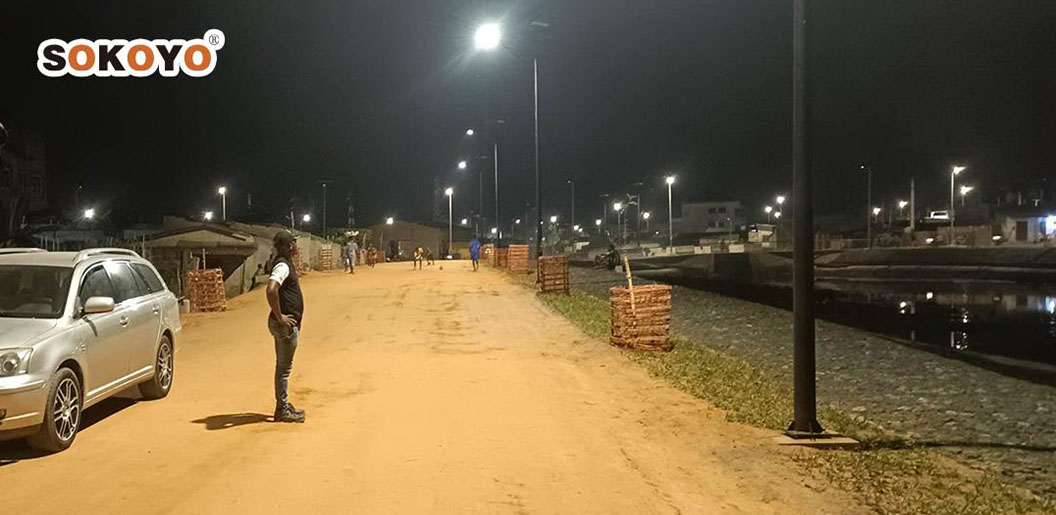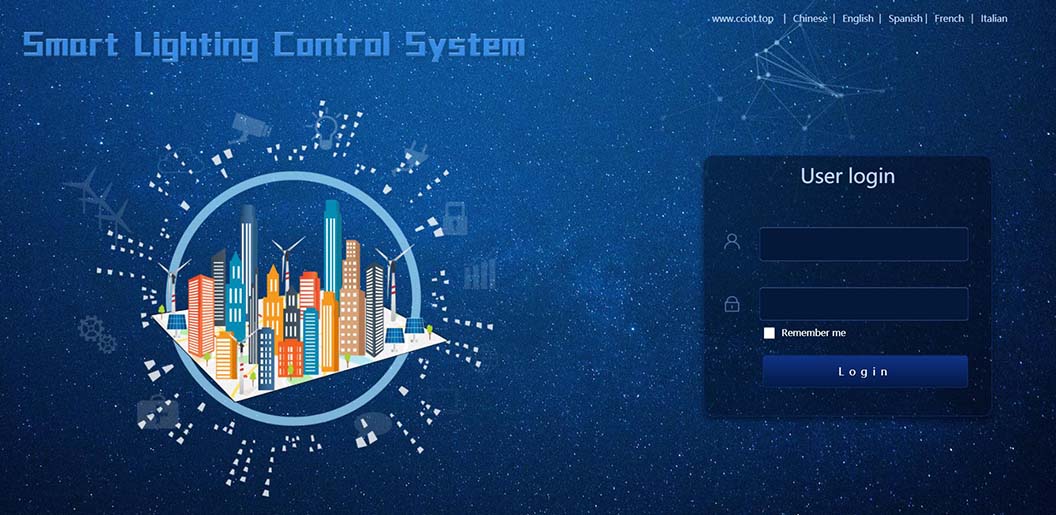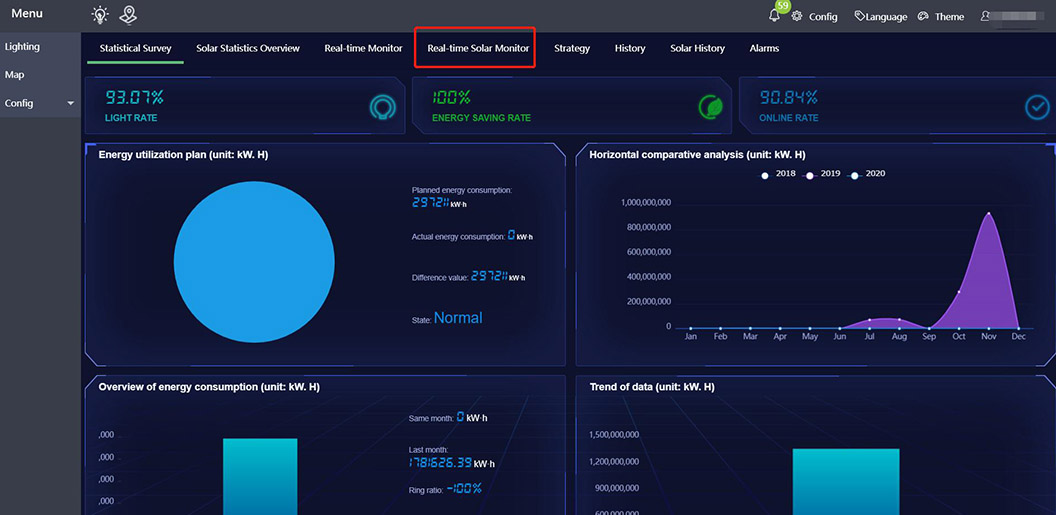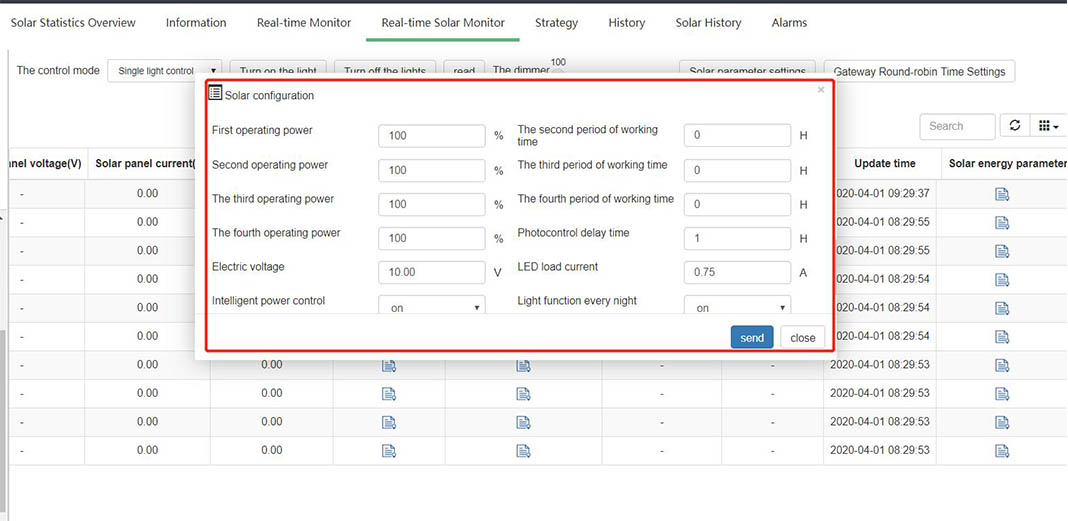Continuous experimentation and application of new products and technologies are the focus of SOKOYO Solar's technological research and development. In June 2024, SOKOYO completed another application case of IoT technology. This project demonstrated the advantages of Zigbee technology, including low power consumption, high reliability, and flexible network structure. It also set a new benchmark for the application of the Internet of Things (IoT) in urban infrastructure.

Project location: Benin
LED power: 60w
Solar panel: 240w
Lithium battery: 25.6v 60ah
Lamp pole height: 8.5m
Internet system: Zigbee
Lamp: Split Solar Street Light CONCO
Through IoT technology, the intelligent road lighting system enables remote monitoring and management. Administrators can monitor the status of each lighting device in real time, perform fault diagnosis and maintenance, and improve the overall management level of the city's lighting system. Additionally, the system can automatically adjust brightness based on ambient light and traffic conditions, achieving energy conservation and emission reduction.

System login interface


Digital Control Backend
In the field of outdoor lighting, the combination of the Internet of Everything and digital management has brought significant transformations. Intelligent lighting systems utilize IoT technology to interconnect streetlights, sensors, and control centers, enabling smart management of lighting equipment.
The digital management system further enhances the efficiency of these smart lighting networks by scheduling preventive maintenance, reducing repair costs and downtime. Additionally, these systems can generate detailed energy consumption reports, assisting city managers in optimizing energy use and reducing carbon emissions.
Moreover, in terms of public safety, intelligent lighting systems can be integrated with surveillance cameras and emergency alarm systems, enhancing urban security. Overall, the application of the Internet of Everything and digital management in outdoor lighting not only improves management efficiency and energy-saving effects but also provides a solid foundation for the construction of smart cities.
Currently the first one.
